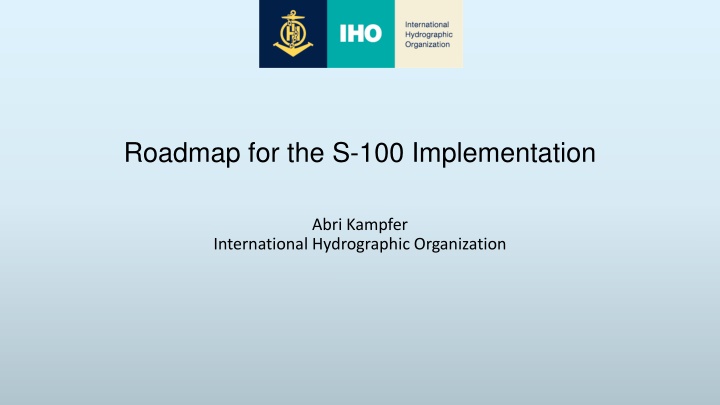
Implementing S-100 and S-101 ENC for Marine Navigation
Explore the roadmap for the implementation of S-100 and S-101 ENC by the International Hydrographic Organization. Learn about the characteristics of S-101 ENC, feature conversion from S-57 to S-101, coordinated implementation of S-101 ENC services, and why S-101 ENC is seen as the future fuel for IMO ECDIS. Discover the benefits, functionalities, and cyber-security aspects of these premium marine navigation products.
Uploaded on | 0 Views
Download Presentation

Please find below an Image/Link to download the presentation.
The content on the website is provided AS IS for your information and personal use only. It may not be sold, licensed, or shared on other websites without obtaining consent from the author. If you encounter any issues during the download, it is possible that the publisher has removed the file from their server.
You are allowed to download the files provided on this website for personal or commercial use, subject to the condition that they are used lawfully. All files are the property of their respective owners.
The content on the website is provided AS IS for your information and personal use only. It may not be sold, licensed, or shared on other websites without obtaining consent from the author.
E N D
Presentation Transcript
Roadmap for the S-100 Implementation Abri Kampfer International Hydrographic Organization
S-101 ENC: THE FUTURE PREMIUM PRODUCT Characteristics of S-101 ENCs: - minimal modernization of cartographic content compared to S-57 ENC - easier software maintenance on end user devices at sea - cyber secure through modern encryption - supports the implementation of e-navigation concepts through interoperability with other data services based on S-100: high definition bathymetry (S-102) water level information (S-104) surface currents (S-111) Marine protected areas (S-122) UKC management (S-129) Radio services (S-123) Navigational warnings (S-124)
S-57 TO S-101 CONVERSION FEATURE CATEGORIES (a) Things in S-57 which can be translated into an S-101 equivalent without loss (b) The domain of features defined by the S-57 source (c) Anything in S-57 which can t be (or doesn t need to be) translated into an S-101 equivalent (d) Features defined in S-101 which has no defining mechanism in S-57 (e) Real world features which previously had no representation in S-57 which are now expressible in S-101 (these are encoded into features (d)). The Universe
COORDINATED IMPLEMENTATION OF S-101 ENC SERVICES S-101 ENC can be produced in two ways: - Conversion of S-57 datasets without essential manipulation: Cartographic content will be identical for S-57 ENC and resulting S-101 ENC. S-57 ENC Conversion will create a fully valid S-101 ENC. - Export from matured database production systems: Cartographic content can be identical with S-57 ENC of the same sea area, or slightly enriched by some specific geometric features and attributes if the producer does so. Duel fuel is a must to service legacy systems in the field.
S-101 ENC AS THE FUTURE FUEL FOR IMO ECDIS Arguments for IMO to accept S-101 ENC as official digital chart data featuring ECDIS: - S-101 offers minimal modernization of cartographic content compared to S-57: both formats maintain the same level of cartographic content for safety of navigation. - supports the implementation of e-navigation concepts through interoperability with other data services based on S-100. - cyber secure through modern encryption.
ANY QUESTIONS ? ANY QUESTIONS ? https://iho.int
